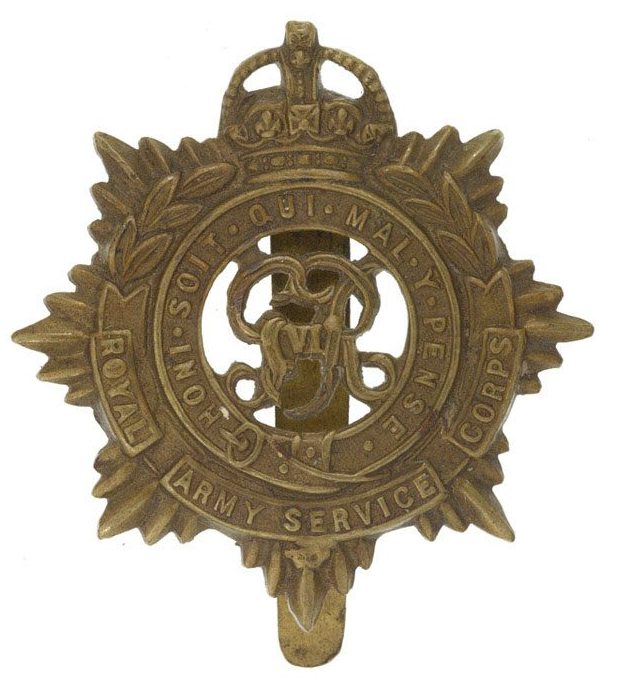Personal Details
Born: 31 December 1889 in New Brompton, Kent.
Family: He was the second of five children born to William E Millier, a beer retailer, and his wife Elizabeth. He married Elsie Eliza Still on 9 September 1913 and together they had three children – Geoffrey W, Hugh E and Michael A.
Residence: In 1891 he lived in Spey Street, Bromley, Middlesex. By 1901 the family had moved to 140 Commercial Road, St. George in the East, Middlesex where they were still living in 1911. William’s military records show an address of 71 Green End, Whitchurch; this is the address shown on the 1919 Absent Voters’ Register. He was discharged to Stanwell Lodge, Alcester Road, Alcester, Surrey and in 1939 was living at Crays Pond House, Henley, Oxfordshire.
Employment: In 1911 and 1919 he was a journalist; in 1939 he was a sub editor.
Died: In 1973 in Reading, Berkshire, aged 83.
Military Details
Regiment: Royal Army Service Corps
Rank: Private
Service Number: M2/033910
Date of Enlistment: 15 January 1915
Date of Discharge: 16 March 1919
Reason for Discharge: Demobilisation
William was awarded the Campaign Medals (British War Medal and Victory Medal)

The British War Medal (also known as 'Squeak') was a silver or bronze medal awarded to officers and men of the British and Imperial Forces who either entered a theatre of war or entered service overseas between 5th August 1914 and 11th November 1918 inclusive. This was later extended to services in Russia, Siberia and some other areas in 1919 and 1920. Approximately 6.5 million British War Medals were issued. Approximately 6.4 million of these were the silver versions of this medal. Around 110,000 of a bronze version were issued mainly to Chinese, Maltese and Indian Labour Corps. The front (obv or obverse) of the medal depicts the head of George V. The recipient's service number, rank, name and unit was impressed on the rim.
The Allied Victory Medal (also known as 'Wilfred') was issued by each of the allies. It was decided that each of the allies should each issue their own bronze victory medal with a similar design, similar equivalent wording and identical ribbon. The British medal was designed by W. McMillan. The front depicts a winged classical figure representing victory. Approximately 5.7 million victory medals were issued. Interestingly, eligibility for this medal was more restrictive and not everyone who received the British War Medal ('Squeak') also received the Victory Medal ('Wilfred'). However, in general, all recipients of 'Wilfred' also received 'Squeak' and all recipients of The 1914 Star or The 1914/1915 Star (also known as 'Pip') also received both 'Squeak' and 'Wilfred'. The recipient's service number, rank, name and unit was impressed on the rim.

